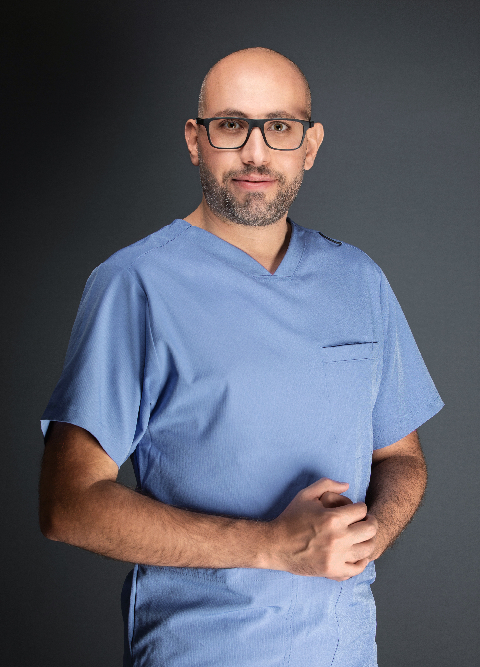This Muscle Energy Techniques (MET) Course is designed to teach healthcare professionals how to effectively apply MET to manage musculoskeletal dysfunctions. MET is a highly effective manual therapy technique commonly used by physiotherapists, chiropractors, and manual therapists to address muscle tightness, joint restrictions, and mobility issues. The course will provide a comprehensive understanding of the physiological principles behind MET, how to assess patients accurately, and how to integrate MET with other treatment methods for optimal patient outcomes.
Throughout the course, participants will gain the skills and confidence to apply MET in clinical settings, customize treatments to individual needs, and achieve long-term improvements in patient mobility and pain reduction.
What You’ll Learn:
Understand Muscle Energy Techniques (MET) and their physiological foundations.
Apply MET effectively for various musculoskeletal conditions.
Assess patients to determine when MET is the appropriate treatment approach.
Integrate MET within a comprehensive treatment plan to enhance outcomes.
Recognize common errors in MET application and how to avoid them.
This Course Includes:
2 days of in-person, hands-on training for real-world practice.
FREE Online modules of all techniques with full lifetime access on mobile and TV.
A Certificate of Completion to validate your MET proficiency.
Requirements:
Basic knowledge of anatomy is helpful but not required. The course will cover all necessary anatomy for effective application of MET.
Course Content:
Theory:
Introduction to MET: History and application.
Understanding MET: How it works and its clinical uses.
MET vs. PNF: Key similarities and differences.
Muscle Types and MET: Tailoring MET to different muscle types.
Patterns of Imbalance: Recognizing dysfunctions in muscle balance.
Identifying Sources of Pain: How to assess pain and its relation to muscle imbalances.
Neurological Effects of MET: Exploring potential impacts on the nervous system.
Common Errors in MET: Identifying and correcting mistakes during application.
Indications and Contraindications: Knowing when and when not to use MET.
General Considerations: Best practices for safe and effective treatment.
Practical Application - Upper Body:
Trapezius: MET for shoulder tension and neck pain.
Levator Scapulae: Techniques for neck and upper back mobility.
Sternocleidomastoid: Addressing neck tightness and restriction.
Scalene: Relieving tightness and improving cervical mobility.
Pectoralis Major: Chest muscle release techniques.
Pectoralis Minor, Biceps Brachii, and Coracobrachialis: Upper arm and shoulder release.
Latissimus Dorsi & Teres Major: Techniques for shoulder and upper back tension.
Rotator Cuff—Subscapularis and Infraspinatus: Shoulder joint mobility and pain management.
Practical Application - Lower Body:
Gastrocnemius and Soleus: Addressing calf tension and restricted movement.
Hamstrings: Releasing tightness and improving leg flexibility.
Tensor Fasciae Latae and Iliotibial Band: Techniques for hip and thigh pain relief.
Adductors: Treatment for inner thigh tightness and imbalances.
Practical Application - Trunk and Pelvis:
Iliopsoas: Hip flexor release and pelvic alignment.
Rectus Femoris: Quads release techniques for improved movement.
Piriformis: Techniques for sciatic pain and hip rotation.
Quadratus Lumborum: Addressing lower back tension.
Erector Spinae: Techniques for spinal mobility and lower back pain.
Key Lesion:
Integration: Understanding how different muscles and techniques work together.
Key Lesion Identification: Detecting the source of dysfunction and addressing it with MET.
Why Choose This Course?
Comprehensive Learning: Learn both theory and practical techniques for MET in treating musculoskeletal conditions.
Hands-on Training: Apply MET under expert guidance to build confidence in your skills.
Patient-Centered Approach: Customize MET to suit each patient’s unique needs and condition.
Integrative Knowledge: Understand how to incorporate MET within broader treatment plans for optimal clinical results.

Senior Physiotherapist | Expert in Osteopathy & Manual Therapy
09:00 AM – 10:30 AM (90 mins)
Theory – Part 1
Introduction
Understanding MET
MET-PNF: Similarities and Differences
Muscle Types and MET
Patterns of Imbalance
10:30 AM – 10:45 AM
Break
10:45 AM – 12:15 PM (90 mins)
Theory – Part 2
Identifying Sources of Pain
Neurological Effects of MET
Common Errors
Indications & Contraindications
General Considerations
12:15 PM – 1:00 PM (45 mins)
Practical – Upper Body (Part 1)
Trapezius
Levator Scapulae
Sternocleidomastoid
Scalene
1:00 PM – 2:00 PM
Lunch Break
2:00 PM – 3:15 PM (75 mins)
Practical – Upper Body (Part 2)
Pectoralis Major
Pectoralis Minor, Biceps Brachii, Coracobrachialis
Latissimus Dorsi & Teres Major
Rotator Cuff
3:15 PM – 3:30 PM
Break
3:30 PM – 5:00 PM (90 mins)
Practical – Lower Body
Gastrocnemius and Soleus
Hamstrings
Tensor Fasciae Latae (TFL) & Iliotibial Band (ITB)
Adductors
09:00 AM – 10:30 AM (90 mins)
Practical – Trunk and Pelvis (Part 1)
Iliopsoas
Rectus Femoris
Piriformis
10:30 AM – 10:45 AM
Break
10:45 AM – 12:15 PM (90 mins)
Practical – Trunk and Pelvis (Part 2)
Quadratus Lumborum
Erector Spinae
12:15 PM – 1:00 PM (45 mins)
Extras – Part 1
Integration
Key Lesion
Anterior Innominate MET
1:00 PM – 2:00 PM
Lunch Break
2:00 PM – 3:15 PM (75 mins)
Extras – Part 2
Posterior Innominate
Pubic MET/Thrust
Pubic Self-Mobilization
Ilium Inflare & Outflare
3:15 PM – 3:30 PM
Break
3:30 PM – 5:00 PM (90 mins)
Extras – Part 3 & Course Conclusion
Sacral Extension MET
Backward & Forward Sacral Torsion MET
Revision & Q&A
Certificate Distribution